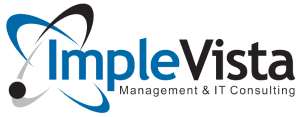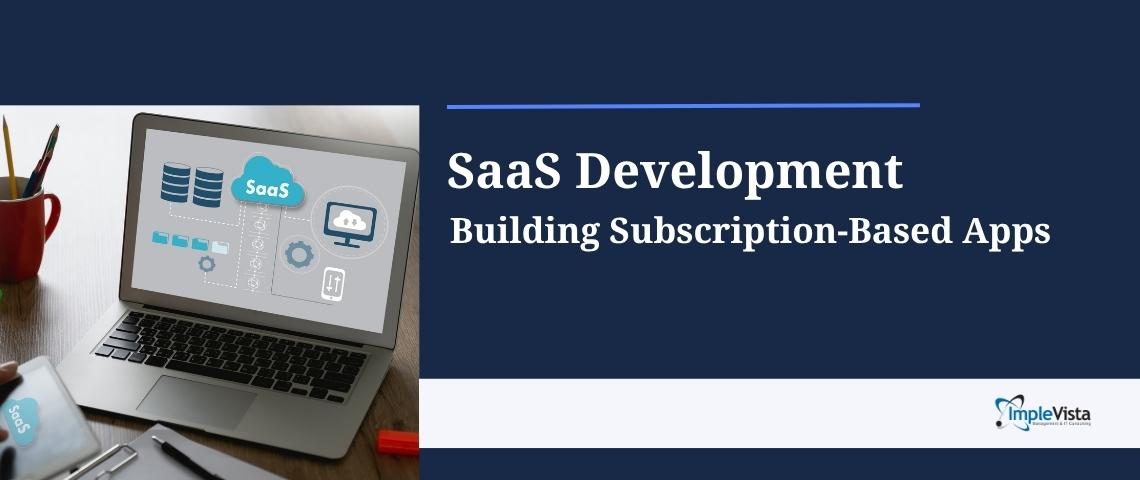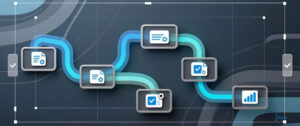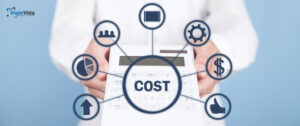Software as a Service (SaaS) refers to cloud-based software delivered over the Internet on a subscription basis. Unlike traditional installed applications, SaaS apps run on remote servers (often in the public cloud) and users access them via web browsers or mobile interfaces. Customers pay a recurring fee (monthly, yearly, or usage-based) rather than a large one-time license, eliminating hefty upfront costs.
This subscription model makes powerful software more accessible – companies can start small and scale up as needed. For example, Fortune Business Insights forecasts the global SaaS market will soar from about $144 billion in 2021 to over $720 billion by 2028, reflecting SaaS’s explosive growth. In this guide, we’ll explore SaaS development – how to design, build, and launch robust subscription-based applications that are secure, scalable, and user-friendly.
Understanding SaaS and Subscription Models
SaaS (Software as a Service) is a delivery model where applications are hosted centrally and rented on demand. Users no longer install software locally; they “spin up” the app online. Under the hood, SaaS providers maintain the infrastructure, operating system, and application code, while clients simply log in and use the features they need. Key characteristics include:
- Cloud Hosting & Multi-Tenancy: SaaS apps typically run in cloud environments (AWS, Azure, GCP) with a multi-tenant architecture. This means one application instance serves many customers securely, keeping each tenant’s data isolated.
- Subscription Billing: Rather than buying perpetual licenses, customers subscribe (monthly/annual) to get access. This generates predictable, recurring revenue and lets businesses budget in a flexible way.
- Always Up-to-Date: The provider pushes updates and new features seamlessly. Customers always have the latest version without manual installs.
- Pay-As-You-Go (PAYG): Many SaaS products offer usage-based or tiered pricing. Clients pay only for features or usage levels they need, scaling up or down as their business grows.
For instance, modern CRMs, collaboration tools, and accounting platforms are delivered as SaaS. Businesses subscribe to them instead of installing on local servers. This shift to cloud subscription models removes maintenance headaches (no patching, no hardware) and spreads costs over time – a boon for growing companies.
Benefits of SaaS Applications for Businesses
SaaS development offers multiple advantages for both providers and users. Some key benefits include:
- Lower Upfront Costs: Customers avoid large one-time expenses. There are no license fees or dedicated IT infrastructure purchases. Instead, a modest subscription covers everything. This lowers the barrier to entry, making enterprise software affordable even for startups.
- Easy Accessibility: Because SaaS apps run in the cloud, authorized users can log in from anywhere (office, home, mobile) on any device with Internet access. Remote work and BYOD policies become seamless.
- Scalability and Flexibility: Cloud infrastructure allows on-demand scaling. As your user base or data grows, you can add more resources instantly without downtime. SaaS platforms also enable feature toggling – turning on/off modules per customer needs.
- Automatic Updates and Maintenance: The vendor pushes security patches and new features centrally. All customers benefit immediately with no action needed on their part. This reduces the maintenance burden for clients.
- Rapid Deployment: New users can start using the software quickly. There’s no lengthy installation – your SaaS dev team deploys the app, and customers just sign up. This faster time-to-market is critical in competitive markets.
- Predictable Costs: A fixed subscription fee means clients can budget their software spend accurately. For providers, the recurring revenue model smooths cash flow. Over time, subscription revenues often exceed one-time license models, as customers continue paying indefinitely while adding new users or features.
These benefits make SaaS a win-win. For customers, SaaS unlocks powerful software in a pay-as-you-grow model. For providers, SaaS ensures continuous engagement – and a steady revenue stream that grows as clients succeed. As one industry report notes, “SaaS is a software distribution model offering agility and cost-effectiveness for companies”. In other words, SaaS combines the best of affordability, performance, and flexibility.
Key Characteristics of SaaS Solutions
When building a SaaS app, developers and business owners should focus on the platform’s core attributes. A well-architected SaaS solution should exhibit:
- Flexible Payment Options: Customers pay only for what they use. Instead of buying a full-featured package, they can start with basic functionality and upgrade as needed. This flexibility in pricing (monthly/annual, tiered plans, add-ons) attracts many users.
- Inherent Scalability: Cloud-based SaaS systems are designed to grow effortlessly with demand. They can add more server capacity or microservice instances on the fly. As one expert blog explains, “Cloud-based SaaS enables organizations to expand easily due to its inherent scalability”. This means startups can launch a minimal product, then support a million users as the product gains traction.
- Automatic Updates & Innovation: A key SaaS trait is centralized updates. The development team can continuously deploy improvements without user intervention. According to industry insights, “SaaS providers handle necessary software updates and develop innovative features over time, so businesses don’t need to invest time or resources in this area”. In practice, this means bug fixes and new modules can reach all customers instantly.
- High Accessibility: SaaS platforms are accessible from any internet-connected device. This mobility is built-in – users don’t need special VPNs or company networks. Everything runs through secure web apps or mobile apps. This constant availability makes SaaS ideal for distributed teams.
- Adaptability: Modern SaaS is designed to be configurable. Clients can often enable or disable features, set user permissions, and even white-label the interface. Thanks to SaaS’s “limitless scalability, accessibility, and insight,” companies using these tools become more adaptable to changes.
- Enhanced Collaboration: Because the app and data live in the cloud, teams across locations can work together in real-time. Features like document sharing, live chat, and shared dashboards encourage collaboration. Many SaaS solutions integrate seamlessly with collaboration tools, keeping everyone on the same page.
- Enterprise-Level Security: Contrary to early fears, SaaS often outperforms on-premise security. Reputable SaaS providers invest heavily in encryption, access controls, and monitoring. They implement disaster recovery and redundancy so that “business’s data remains available and secure even if there is a breach or system failure”. Implevista, for example, emphasizes encryption, multi-factor authentication, and regular audits to protect sensitive data. As one guide notes, SaaS platforms often include “bank-level encryption” and routine backups, building strong customer trust.
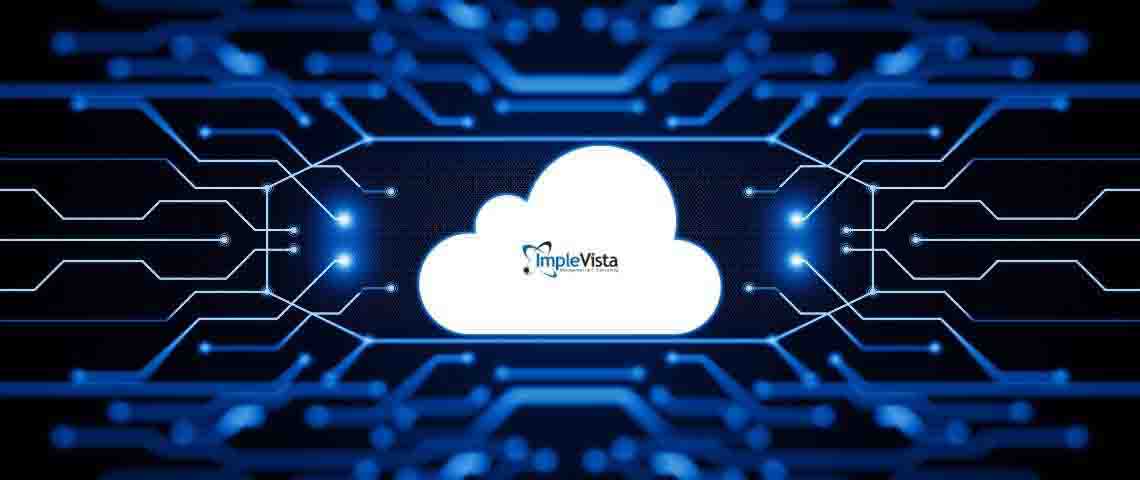
SaaS Development Process: From Idea to Launch
Building a SaaS app follows a structured software development life cycle, but with some unique focus areas. Typical steps include:
- Requirement Analysis: Gather business goals, target users, and must-have features. Understand subscription model requirements (e.g. pricing tiers, usage metering).
- Design & Prototyping: Create wireframes and UI mockups. Plan the information architecture and user journeys. For SaaS, also design the multi-tenant data model (shared vs. isolated data schemas).
- Tech Stack Selection: Choose cloud platform (AWS, Azure, GCP) and architecture. Popular SaaS tech stacks might include React or Angular for frontend, Node.js/.NET/Python for backend, and a microservices infrastructure (often using containers or serverless functions).
- Development: Implement the application code. Important components include the user portal, admin console, subscription/billing module, and APIs for integration. Developers build in common SaaS patterns like single sign-on (SSO), role-based access control, and feature toggles.
- Quality Assurance: Rigorous testing is critical. This includes unit tests, integration tests, performance/load testing (to ensure the service can scale), and security testing (penetration tests, vulnerability scans).
- Deployment: Set up CI/CD pipelines and deploy to the chosen environment. Many teams use container orchestration (Kubernetes/Docker) or Platform-as-a-Service (PaaS) for easier scaling.
- Maintenance & Updates: Once live, the SaaS model continues indefinitely. Continuous monitoring (uptime, usage analytics) and customer support are vital. Updates and patches roll out automatically. Implevista, for example, emphasizes ongoing maintenance and support to keep SaaS apps running optimally.
Implevista follows an agile, iterative approach so that feedback can shape the product. In practice, their process includes requirement analysis, prototyping, development, QA testing, then deployment and maintenance. Key best practices during development include:
- Build an MVP (Minimum Viable Product): Especially for startups, launch with a core set of features. This allows real users to test the concept and provide feedback early.
- Use Scalable Architecture: From day one, use load balancers, auto-scaling groups, and stateless services so you can handle growth without refactoring. Cloud services like AWS Lambda, Azure Functions or Kubernetes can help.
- Implement Modular Design: A microservices approach isolates different functions (billing, CRM, reporting) so they can evolve independently and scale separately.
- Focus on Security from the Start: Encrypt data at rest and in transit. Use secure authentication (OAuth 2.0, JWT, etc.) and multi-factor login. SaaS apps often handle sensitive customer data, so treating security as a core feature is non-negotiable.
- Continuous Monitoring: Use tools to track performance and errors (e.g., CloudWatch, New Relic). Since SaaS apps serve clients 24/7, any downtime affects many customers. Automated alerts and real-time analytics help catch issues immediately.
- Robust Testing: In addition to standard testing, conduct multitenancy tests and simulate heavy load. Many SaaS developers use stress testing to ensure the system can handle spikes (e.g. Black Friday sales).
- Documentation & Support: Even the best SaaS needs user guides, API docs, and a support portal. This builds trust and helps customer retention.
A summarized development workflow might look like:
- Plan: Define scope, tech stack, and subscription model.
- Design: UX/UI design + system architecture.
- Develop: Code the app, database, and admin backend.
- Test: Perform QA – functional, performance, security.
- Deploy: Launch on cloud infrastructure with CI/CD.
- Maintain: Monitor, update features, fix bugs, and add improvements.
At each stage, aim to leverage cloud services (databases, CDNs, messaging queues, etc.) to reduce maintenance overhead. As a leading SaaS app development company, Implevista specializes in custom SaaS projects from banking CRMs to project-management tools. Their process-driven approach (agile sprints, regular client demos) ensures projects stay on track and align with client needs.
Subscription Billing and Monetization
A crucial part of SaaS development is the billing system. Common subscription models include:
- Flat-Rate Subscription: One price unlocks the full app. Simple but less flexible.
- Tiered Pricing: Different packages (e.g. Basic, Pro, Enterprise) with increasing features and usage caps. Customers upgrade to higher tiers as they grow.
- Per-User Pricing: Businesses pay per active user or per seat. For example, $10/user/month for a CRM.
- Usage-Based Pricing: Fees based on actual usage metrics (e.g. number of transactions, API calls, storage). This “pay-as-you-go” model scales exactly with customer demand.
- Freemium Model: Offer a free, limited version to attract users, then upsell advanced features.
The billing engine must integrate with payment gateways (Stripe, PayPal, Braintree) to handle automated recurring payments. It should also allow customers to manage subscriptions (upgrade, downgrade, cancel) within the app. Many SaaS teams use existing solutions (Chargebee, Recurly) or implement a custom microservice for billing. Whatever the method, clear invoicing and reliable dunning (failed payment) handling are essential to reduce churn.
Choosing a SaaS Development Company
If you’re planning a SaaS project, partnering with an experienced SaaS development company can make the difference between success and costly missteps. Look for:
- Industry Expertise: A top SaaS development company (like Implevista) will have case studies and a track record of SaaS projects. They understand the unique challenges (security, scaling, subscription logic) and have proven best practices.
- Full-Service Offering: Beyond coding, you need architecture consulting, UI/UX design, and post-launch support. Implevista, for example, offers custom development, SaaS consulting, integration with third-party platforms, migration from legacy systems, and ongoing maintenance. This end-to-end support ensures a smooth journey from concept to live service.
- Technical Skills: Ensure the team is proficient in cloud platforms and modern technologies. They should be strong in backend frameworks, database design (especially for multi-tenant schemas), API development, and DevOps. Certifications in AWS/Azure or partnerships with cloud providers are pluses.
- Security Mindset: Ask about their security protocols – encryption, vulnerability testing, compliance (GDPR, HIPAA, PCI). The right partner treats security as a priority, as Implevista does with multi-factor auth and audits.
- Client Communication: SaaS development thrives on collaboration. Choose a company that emphasizes clear communication, regular updates, and agile iterations. As a “top SaaS development company,” Implevista values ongoing client feedback throughout development.
- Post-Launch Support: Launch is just the beginning. You’ll need updates, new features, and troubleshooting. Implevista explicitly provides “ongoing maintenance and support” so your SaaS app keeps improving after release.
By vetting these areas, you can select a partner (an Implevista digital marketing or SaaS specialist, for instance) to turn your SaaS vision into reality. Many businesses benefit from vertical SaaS expertise – companies like IV Trip (Implevista’s travel SaaS) show how targeting a niche (travel agencies) can pay off. Look for a developer who understands your industry.
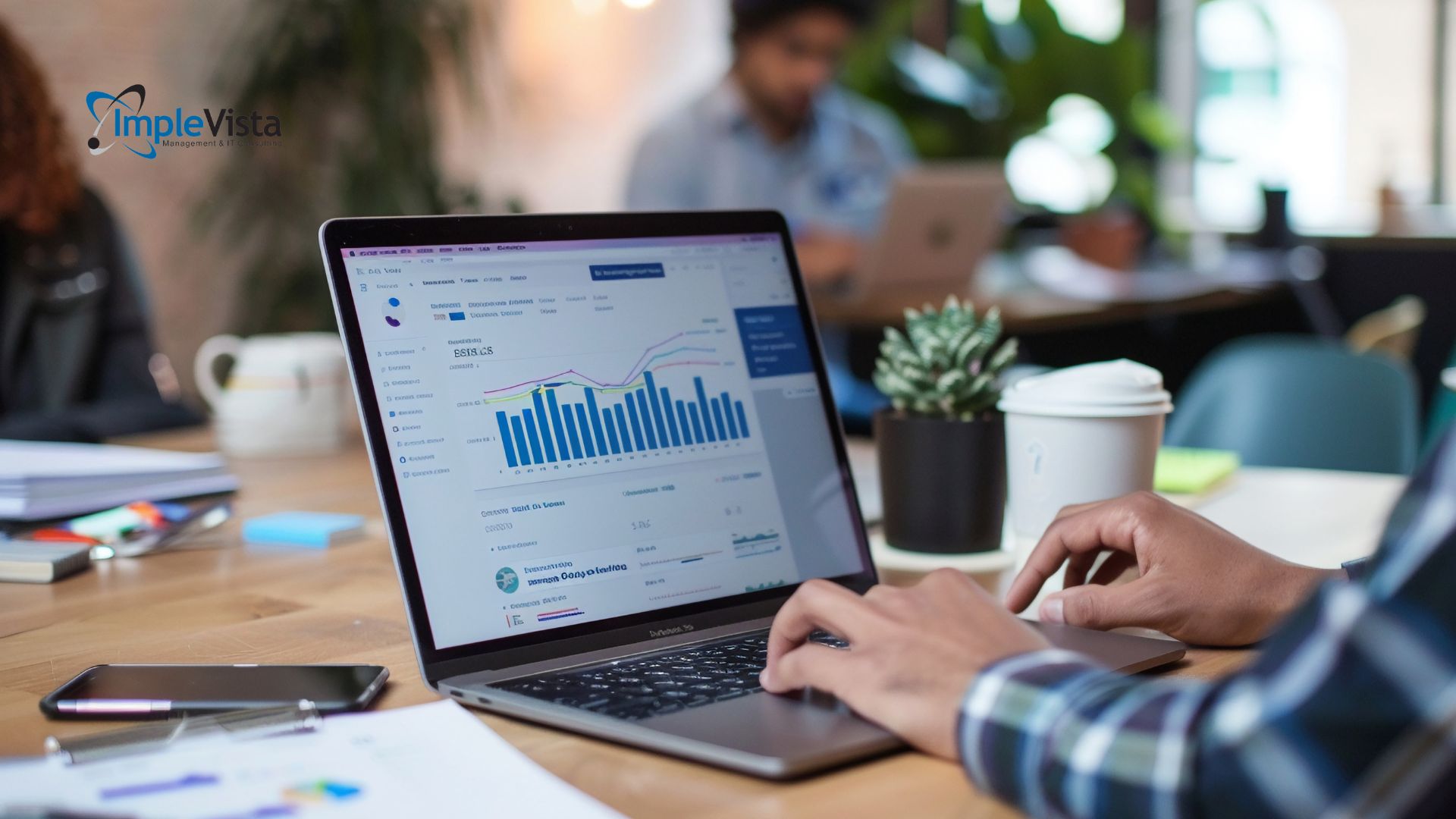
SaaS Development Best Practices
To build a successful subscription app, follow these best practices:
- Design for Scalability: Architect your application to handle growth. Use stateless services, microservices, and auto-scaling. Avoid bottlenecks by load testing under expected traffic spikes.
- Emphasize User Experience: A modern SaaS app should feel intuitive. Invest in clean UI design, responsive layouts (mobile users!), and easy onboarding. First impressions matter: a clunky interface can drive churn.
- Implement Robust Security: Protect data end-to-end. Use HTTPS everywhere, encrypt databases, and segment data per tenant. Enforce strong authentication (OAuth, 2FA) and role-based access. Many SaaS breaches occur due to misconfigurations, so rigorous testing is key.
- Leverage Cloud Services: Don’t reinvent the wheel. Use managed databases, CDN for static content, and serverless functions to reduce infrastructure work. Cloud providers offer analytics, AI services, and more that can enrich your SaaS with minimal effort.
- Automate Deployment: Continuous Integration/Continuous Deployment (CI/CD) pipelines allow you to release updates frequently and safely. Containerization (Docker) and orchestration (Kubernetes) can make scaling and rolling back much smoother.
- Monitor & Optimize: Use performance monitoring tools (New Relic, Datadog) and gather usage analytics. Track how customers use your app to prioritize improvements. Optimize slow queries and fix bugs promptly to keep customers happy.
- Documentation & Support: Provide clear user guides and API documentation if applicable. Build a help center or chatbot for common questions. Proactive customer support (ticketing, chat) is part of the SaaS experience – it shows users they are valued.
- Iterate Based on Feedback: Use agile sprints to release MVP features quickly, then refine based on real user feedback. This customer-centric approach prevents overbuilding features that don’t sell.
By following these practices – many of which Implevista incorporates for its clients – you build a reliable, competitive SaaS product. As one SaaS development guide emphasizes, it’s important to “start with a minimum viable product (MVP)” and plan for regular updates. This modern, incremental way of building software helps startups succeed even in fast-changing markets.
Examples of SaaS Applications (Vertical Solutions)
SaaS spans countless industries. Some examples include:
- Vertical SaaS (Industry-Specific): These are tailored for a single sector. For instance, IV Trip is a SaaS platform built for travel agencies, offering features like real-time flight and hotel booking. IV Trip’s travel SaaS automates itineraries and payments, illustrating how specialized SaaS can solve niche problems. Similarly, e-commerce platforms like Implevista’s own IV Commerce provide SaaS solutions for online retailers (customizable storefronts and order management)【10†】.
- Horizontal SaaS (General Business): Apps like CRM systems, HR platforms, and accounting tools serve many industries. For example, Salesforce (CRM) and Slack (communication) are horizontal SaaS. If you need a broad-market solution, a horizontal SaaS approach may apply.
- Cloud-Based Tools: Even everyday software, like Google Workspace or Microsoft 365, are SaaS offerings (email, documents, etc.). They operate on a subscription model (monthly Office 365 plans).
- Platform SaaS: Some companies combine SaaS with PaaS, letting businesses build on their platform. For example, Shopify provides a SaaS e-commerce store plus an ecosystem to add on apps.
These examples highlight SaaS’s versatility. Whether you’re building a B2B subscription app for enterprises or a consumer-facing SaaS product, the principles are the same. Implevista has experience in multiple domains – from e-commerce SaaS (IV Commerce) to cloud migration services – and can help you choose the right approach for your project.
Latest Trends and Future Outlook in SaaS
The SaaS landscape is evolving rapidly. As 2025 progresses, here are notable trends:
- Artificial Intelligence Integration: AI and machine learning are becoming standard features in SaaS apps. For example, many platforms now include AI-powered analytics or chatbots. Gartner and others note that combining SaaS with AI enables “greater personalization” and smarter automation. Expect features like predictive recommendations or natural-language interfaces.
- Vertical SaaS Growth: Industry-specific SaaS solutions (like IV Trip for travel or FinTech SaaS for banking) are on the rise. These platforms offer deeply tailored workflows and integrations for their niche. Research suggests demand for vertical SaaS will continue growing, as businesses seek domain-specific tools.
- No-Code/Low-Code SaaS: Making SaaS apps even more accessible, platforms that allow no-code development are trending. This lets smaller companies or even end-users customize parts of the app without heavy coding, accelerating deployment.
- Enhanced Security and Compliance: With rising cyber threats, SaaS providers will invest more in security features – from embedded encryption to continuous compliance monitoring. Customers will demand transparency (e.g., SOC 2 certification).
- API-First and Integrations: SaaS is inherently connected – 2025 sees an increase in plug-and-play integrations. More SaaS products offer open APIs so businesses can easily connect them to CRM, marketing, finance tools (as Planfix highlights, “integrate seamlessly” with other systems).
- Micro-SaaS and Niche Play: Smaller, specialized SaaS products (targeting very specific use-cases) are emerging. These micro-SaaS startups can enter markets quickly with minimal features and capture niche demand.
- Continuous Deployment: The traditional annual release cycle is giving way to continuous delivery. SaaS teams now push updates weekly or even daily, ensuring rapid innovation while monitoring stability.
These trends reinforce SaaS’s momentum. With market forecasts showing continued double-digit growth, now is a great time to invest in SaaS development. Businesses can ride these trends by integrating AI, focusing on security, and choosing flexible pricing models.
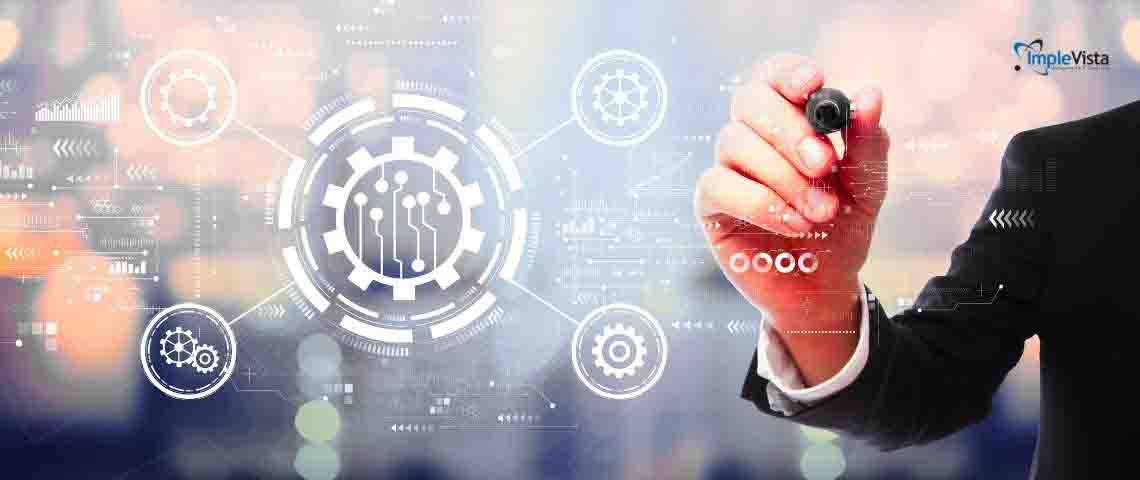
Challenges in SaaS Development
Of course, building SaaS comes with challenges. Key ones include:
- Multi-Tenancy Complexity: Designing the database and application to serve multiple clients securely can be tricky. Decisions about shared vs. separate databases for each tenant affect security and scalability. Plan for proper data partitioning from the start.
- Data Security & Compliance: SaaS apps often handle sensitive personal or financial data. Developers must ensure data encryption (at rest and in transit), strong authentication, and comply with regulations (GDPR, HIPAA, PCI-DSS, etc.). Implevista’s teams implement industry-standard security protocols and regular audits to mitigate these risks.
- Uptime and Reliability: Customers expect their SaaS to be up 24/7. Ensuring near-zero downtime requires redundant servers, failover strategies, and a robust monitoring setup. Multi-region deployments can help if one data center fails.
- Scaling Predictability: It can be hard to anticipate the exact resources needed as users grow. Use cloud auto-scaling to handle spikes, and choose a flexible architecture (vertical/horizontal scaling, as Intelivita suggests).
- Customer Acquisition: SaaS is competitive. Beyond building the app, you must market it. Investing in digital marketing is crucial – Implevista, for example, offers integrated digital marketing services to help SaaS clients promote their products online (SEO, content, social media).
- Continuous Updates: Users expect rapid feature delivery. Balancing innovation with stability means maintaining a disciplined DevOps culture. You’ll need to continuously test and deploy without disrupting existing customers.
Despite these hurdles, experienced teams have strategies to overcome them. For instance, Intelivita recommends budgeting at least 25% of your development budget for maintenance, ensuring you have resources for ongoing support. By anticipating such challenges and building a solid plan, your SaaS development project can avoid common pitfalls.
Implevista’s SaaS Expertise
As a top SaaS application development company, Implevista brings extensive expertise to every project. Our services cover the full SaaS lifecycle:
- Custom SaaS Development: We tailor solutions to your needs – whether it’s a custom workflow tool, a SaaS e-commerce site (like our IV Commerce platform), or a vertical SaaS for your industry. Our developers use cutting-edge tech (microservices, React/Angular, cloud databases) to build fast, responsive apps.
- SaaS Consulting: Not sure how to structure your SaaS model? Our consultants analyze your business case and help choose the right architecture and pricing model. We plan for scale and future enhancements.
- Integration Services: We integrate your SaaS app with third-party systems (payment gateways, analytics, CRM) for a seamless ecosystem. This means your SaaS can, for example, sync customer data with marketing tools or accounting software.
- SaaS Migration: Moving from on-prem or legacy systems? We handle data migration and re-platforming to the cloud with minimal downtime. Many of our clients have smoothly transitioned to SaaS thanks to this expertise.
- Maintenance & Support: After launch, our work continues. We provide regular updates, performance monitoring, and 24/7 support to keep your SaaS reliable.
Clients who choose Implevista benefit from our proven process and track record. As Bangladesh’s top SaaS development company, we emphasize high quality, security, and timely delivery. Our agile teams ensure you are involved at every step, and our flexible engagement models fit any budget. Whether you need a fully custom SaaS app or enhancements to an existing platform, Implevista has the skills and dedication to succeed.
Conclusion
SaaS development empowers businesses to build software that’s accessible, scalable, and profitable. By leveraging cloud platforms and subscription models, you can deliver continuous value to customers while enjoying recurring revenue. Key takeaways:
- SaaS applications run on the cloud and are paid for by subscription. They offer users anywhere-anytime access and providers continuous business.
- The SaaS model brings lower upfront costs, easy updates, and inherent scalability.
- Building great SaaS apps requires attention to architecture (multi-tenant, microservices), security (encryption, compliance), and user experience.
- Trends like AI integration, vertical specialization, and real-time analytics are shaping modern SaaS.
- Implevista’s team can guide you from planning through launch. We’ve built SaaS platforms across industries (travel, e-commerce, finance) and stay up-to-date on best practices.
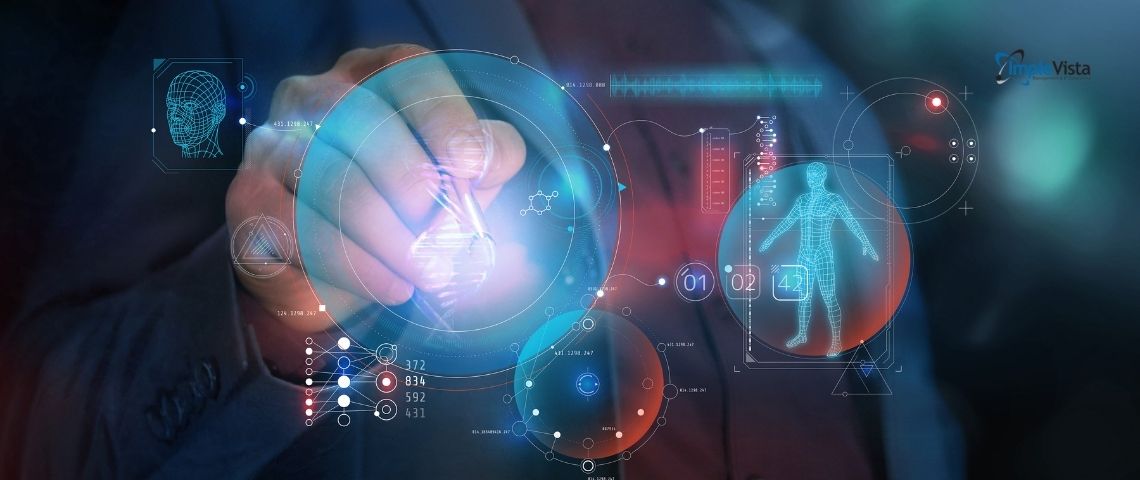
Frequently Asked Questions (FAQs)
- What is SaaS development?
SaaS development is the process of creating software applications that are hosted on the cloud and delivered via the Internet, typically on a subscription or pay-as-you-go basis. Unlike traditional software, SaaS apps are not installed locally; users access them through web browsers or mobile devices. Providers handle all the infrastructure, updates, and maintenance. - What are the main benefits of SaaS applications?
SaaS offers lower upfront costs (subscription vs. large license fee), easy accessibility from anywhere, built-in scalability, and automatic updates. Businesses also benefit from no-install setup and the ability to scale resources on demand. For vendors, SaaS yields steady recurring revenue and simpler deployment of new features. - How does a SaaS app differ from a traditional web application?
While all SaaS apps are web applications, “SaaS” implies a specific business model and infrastructure. A SaaS app is designed for multitenancy (serving multiple clients securely on one platform) and is sold as a subscription. Traditional web apps might be one-off deployments or internal tools. SaaS emphasizes ongoing support, subscription billing, and cloud deployment, whereas a non-SaaS web app might be hosted on a fixed server and sold under a perpetual license. - What should I look for in a SaaS development company?
Look for experience with cloud platforms (AWS/Azure), strong security practices, and a track record of building scalable multi-tenant systems. The ideal partner (like Implevista) should offer end-to-end services: consulting, custom development, integrations, and post-launch support. Check their portfolio for SaaS projects and ask about their development process and support policies. - How long does it take to build a SaaS application?
Timelines vary by complexity. A basic MVP (minimum viable product) SaaS app might launch in a few months, while a fully featured enterprise SaaS platform could take 6–12 months or more. Factors include number of features, integrations, and compliance requirements. Agile development helps by delivering early versions for feedback. - What technologies are commonly used in SaaS development?
Popular tech stacks include JavaScript frameworks (React, Angular, Vue) or mobile frameworks (Flutter, React Native) for the frontend. Backend often uses Node.js, Python (Django/Flask), .NET Core, or Java on cloud services. Databases are usually scalable SQL (PostgreSQL, MySQL) or NoSQL (MongoDB, DynamoDB). Containerization (Docker) and orchestration (Kubernetes) are common. Cloud services (AWS Lambda, Azure App Service) are used to handle infrastructure. - What are common SaaS subscription models?
Typical models are monthly or annual subscriptions, tiered pricing plans (Basic/Pro/Enterprise), per-user fees, and usage-based billing. Some SaaS also offer freemium tiers (basic free plan with paid upgrades). The right model depends on your product and customers. Many SaaS devs implement a flexible billing engine to support multiple plans and payment gateways. - What is multi-tenancy in SaaS?
Multi-tenancy means a single application instance serves multiple clients (tenants), with each tenant’s data isolated. This contrasts with single-tenant architecture, where each client has its own app instance. Multi-tenancy allows easier maintenance (one codebase), but requires careful design so data and configurations don’t leak between tenants. It’s a core concept in SaaS design. - How do SaaS companies handle security and compliance?
Leading SaaS companies build security into every layer. This includes encrypting data at rest/in transit, using secure authentication (OAuth, MFA), regular security audits, and compliance with regulations (GDPR, SOC 2, etc.). For example, SaaS providers often use industry-standard encryption and disaster-recovery protocols to protect customer data. Clients should verify that their SaaS vendor follows best security practices. - How can Implevista help with SaaS development?
Implevista offers complete SaaS development services: from initial consulting and design to implementation, integration, and support. Our team has built custom SaaS solutions (like IV Trip and IV Commerce) and can guide you through architecture, UX, cloud deployment, and launch. We also provide post-launch maintenance to keep your SaaS app secure and up-to-date. Contact Implevista to learn how we can help you build a successful subscription-based application.
Ready to turn your SaaS idea into reality? Contact Implevista today to discuss your project and see how our SaaS development services can accelerate your growth. You can also explore our SaaS solutions like IV Commerce and IV Trip for inspiration, or subscribe to the Implevista blog for more tech insights. Let us help you build a cutting-edge subscription app that drives your business forward!
